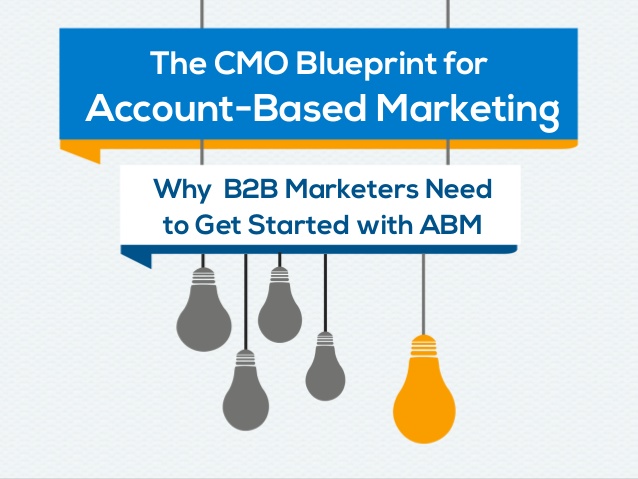Author: Jeffrey Vocell / Source: hubspot.com Account-based marketing or inbound marketing? Which one should you use? Well, maybe that's n

Account-based marketing or inbound marketing? Which one should you use?
Well, maybe that’s not the right way to think about it. As it turns out, the two strategies are actually pretty complementary when done well.
With all the confusion between account-based marketing and inbound marketing, we thought we would clear the air — and hopefully help show you how the two work together.
What Is Account-Based Marketing?
Account-based marketing (ABM) is a targeted approach to marketing based on an account, or a company, rather than an individual buyer. For the official definition, let’s turn to where the Internet goes for answers: Wikipedia. According to their definition, ABM is “a strategic approach to business marketing based on account awareness in which an organization considers and communicates with individual prospect or customer accounts as markets of one.”
To simplify it though, let’s put it this way: Instead of marketing to individuals, ABM is about marketing to all decision makers within a target company at once.
Here’s a visual explanation from Terminus, an account-based marketing company.

Are Inbound Marketing and Account-Based Marketing Antithetical?
Because account-based marketing dictates targeting a specific company instead of attracting a wide range of individuals, it can be easy to assume that account-based marketing and inbound marketing are incompatible. But that’s not true. Inbound and ABM can actually be used in conjunction with one another since they share a few core principles.
Context is central to the inbound methodology, and to account-based marketing as well. Having the right context on your potential buyers and the pain points they’re looking to solve helps you in the following areas:
- Tight sales and marketing alignment. There are many natural points within the ABM process that foster a closer relationship between Sales and Marketing. Each team needs to work together to achieve company goals, and ABM brings marketers closer to Sales’ thinking — typically focused on accounts instead of leads.
- Highly targeted, personalized content. The cornerstone of ABM is focusing on specific individuals within an organization, and the content and messaging you send with ABM should be highly personalized and targeted to specific individuals within an account.
- Customer happiness, retention, and upsell. Because ABM zeroes in on a core set of specific accounts, focusing on those clients’ happiness, retention, and potential to utilize more of your product/service through upselling can be a viable growth strategy.
Inbound is about adapting to the way people want to shop and buy. Account-based marketing fits nicely into that philosophy in that it enables marketers and salespeople to take a thoroughly personalized approach to a handful of accounts.
In a smaller addressable market, you can leverage ABM for your lead generation strategy, and lean on your online…

COMMENTS